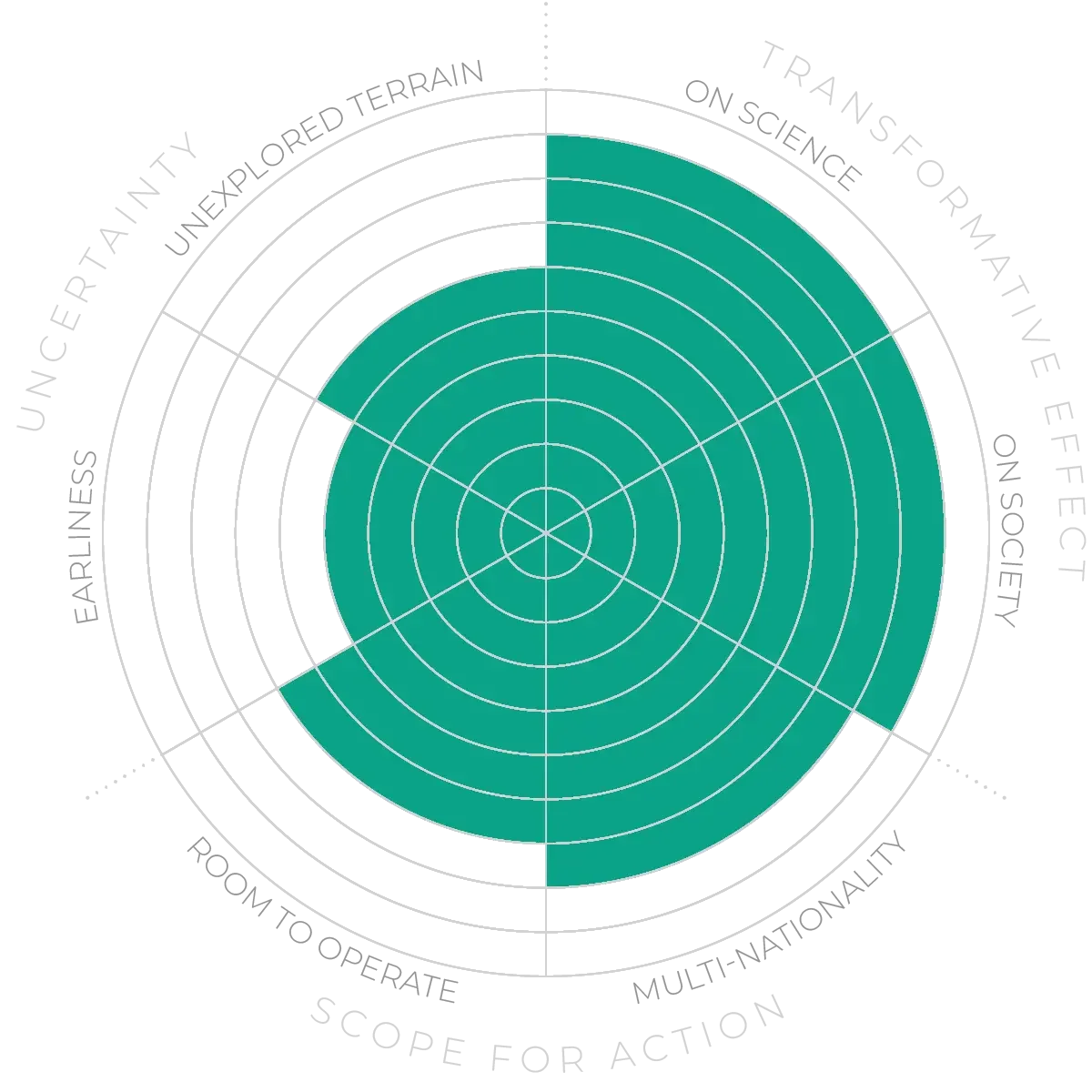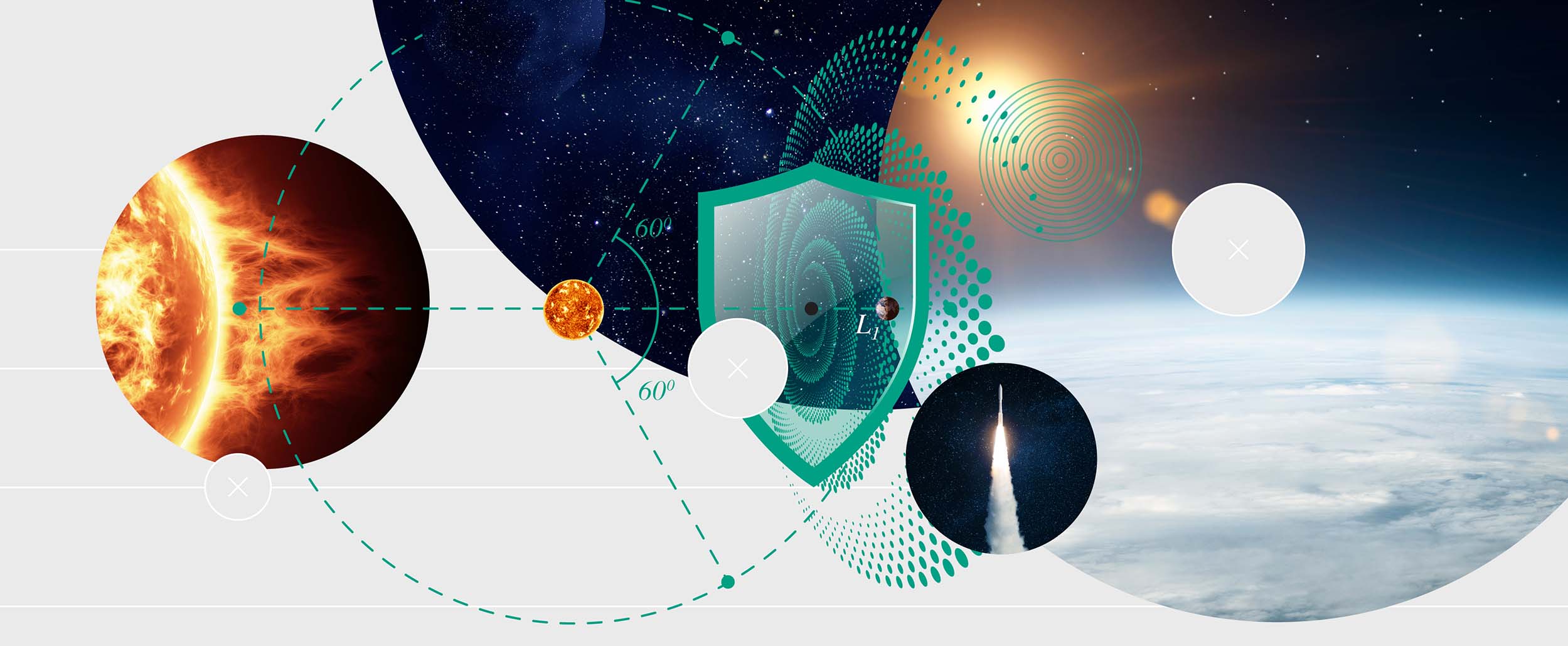Future Horizons:
10-yearhorizon
Falling costs spur interest
25-yearhorizon
Feasibility studies begin
The simplest notion is a large occulting disc or “parasol”. This would be placed at a carefully chosen position between the Earth and the Sun, in order to produce a permanent partial solar eclipse. The ideal location would be Lagrange Point 1, where the gravitational pulls of the Sun and Earth are balanced.24
Researchers have also considered a number of alternative reflectors for reducing the radiation incident on Earth.25. These include Fresnel lenses, diffraction gratings and mirrors.26 27 The key considerations are the robustness of the design to meteoroids and other threats, and the mass of the structure — which must be carried into space by rocket, or else manufactured in space, adding to the cost.
All these technologies face considerable technical and economic barriers.28 For example, an occulting disc at Lagrange Point 1 would need to have a surface area of millions of square kilometres: no structure remotely close to such a scale has ever been constructed in space. Furthermore, such projects arguably also create a dangerous single point of failure in our climate-mitigation strategies: in contrast to Earth-based forms of SRM, the scale of investment and hardware deployment required for a space-based reflector would mean putting all our eggs in one basket, with catastrophic risks if the project failed.
Space-based solar radiation modification - Anticipation Scores
The Anticipation Potential of a research field is determined by the capacity for impactful action in the present, considering possible future transformative breakthroughs in a field over a 25-year outlook. A field with a high Anticipation Potential, therefore, combines the potential range of future transformative possibilities engendered by a research area with a wide field of opportunities for action in the present. We asked researchers in the field to anticipate:
- The uncertainty related to future science breakthroughs in the field
- The transformative effect anticipated breakthroughs may have on research and society
- The scope for action in the present in relation to anticipated breakthroughs.
This chart represents a summary of their responses to each of these elements, which when combined, provide the Anticipation Potential for the topic. See methodology for more information.



